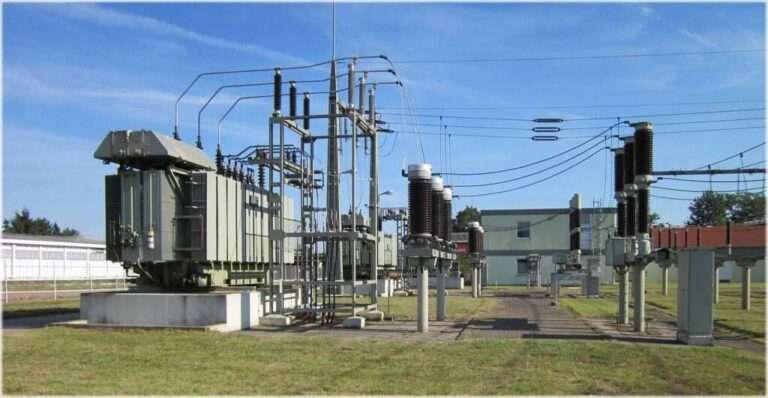Purpose of Excitation System: Important Concepts
The excitation system plays a crucial role in the stable and efficient operation of synchronous generators. It is responsible for providing the necessary field current to the generator’s rotor winding, ensuring that the generator produces a constant and synchronized output voltage.
Read More

Purpose of Excitation system is to regulate the generator’s terminal voltage and maintain the system’s stability during varying load conditions and disturbances.
Purpose of Excitation System
Voltage Regulation: One of the primary purpose of excitation system is to maintain the generator’s output voltage within acceptable limits. Fluctuations in voltage can lead to unstable grid conditions and damage to connected equipment.
The excitation system ensures that the generator’s voltage remains consistent under different load demands and during transient events.
Reactive Power Control: The excitation system also controls the generator’s reactive power output. Reactive power is essential for maintaining voltage levels and supporting the transmission of active power in the electrical grid. By adjusting the field current, the excitation system can regulate the generator’s reactive power output and help stabilize the system’s voltage profile.
System Stability: During sudden load changes or disturbances in the grid, synchronous generators can experience fluctuations in rotor speed and terminal voltage.
The excitation system swiftly responds to such changes, providing the necessary field current to stabilize the generator and prevent it from slipping out of synchronism with the grid. This helps maintain the overall stability of the power system.
Field Current Limiting: Excitation systems include protective features to limit the field current within safe operating bounds. Excessive field current can cause overheating and damage the generator. The excitation system ensures that the field current is maintained within the generator’s thermal limits, enhancing its operational reliability.
Facts about Excitation System Models
Analog vs. Digital Excitation Systems: Historically, excitation systems were primarily analog-based, relying on various control elements and magnetic amplifiers. However, with advances in digital technology, modern excitation systems have shifted towards fully digital solutions. Digital excitation systems offer enhanced flexibility, better control algorithms, and easier integration with overall power plant automation.
Redundancy and Reliability: Excitation systems are often designed with redundant components to ensure a high level of reliability. Redundancy minimizes the risk of excitation system failure, thereby reducing the chances of generator trips and costly downtime.
Field Forcing Capability: Some excitation systems come equipped with a field forcing feature. In the event of a severe disturbance or prolonged outage, this capability allows the excitation system to provide an initial excitation current to “force” the generator to reconnect to the grid swiftly.
Adaptive Control Strategies: Modern excitation system models utilize advanced adaptive control strategies, such as adaptive gain control and model-based predictive control. These techniques improve the excitation system’s performance under varying operating conditions and enhance its ability to respond to dynamic system events.
Integration with Power System Stabilizers (PSS): Excitation systems can be integrated with Power System Stabilizers (PSS) to dampen low-frequency oscillations and enhance overall system stability. PSS measures the system’s oscillatory behavior and sends appropriate signals to the excitation system to modulate the field current and dampen these oscillations.
Grid Code Compliance: Excitation system models must comply with the specific grid codes and regulations of the regions in which they operate. Grid codes outline the technical requirements for power generation, including voltage and frequency control, and excitation systems play a crucial role in meeting these standards.
Excitation System Testing and Simulation: Before installation, excitation system models undergo rigorous testing and validation through simulations and hardware-in-the-loop testing. These tests ensure that the excitation system functions as intended and can handle various operating scenarios.
Excitation System Maintenance: Regular maintenance and monitoring of excitation systems are essential to ensure their long-term reliability and performance. Condition monitoring techniques and predictive maintenance strategies are often employed to detect potential issues before they lead to failure.
Conclusion
The purpose of excitation system is a critical , fulfilling multiple essential functions such as voltage regulation, reactive power control, and system stability. As technology advances, excitation systems continue to evolve, incorporating digital control, adaptive strategies, and grid code compliance to ensure efficient and reliable operation in power generation systems.
The integration of excitation systems with other control elements, such as Power System Stabilizers, further contributes to the stability and reliability of electrical grids. Regular maintenance and testing are crucial to ensure that excitation systems perform optimally and safeguard the overall integrity of power generation facilities.
Related Posts:
- Excitation Systems: Components & 4 Important Methods
- Automatic Stator Winding Machine: Best Guide
- Induction Motor: Important Types, Construction & Working
- What is Demand Factor and Diversity Factor? Quick Concepts
- Power Triangle: Best Applications You Need to Know
Follow us on LinkedIn”Electrical Insights” to get the latest updates in Electrical Engineering. You can also Follow us LinkedIn and Facebook to see our latest posts on Electrical Engineering Topics.




